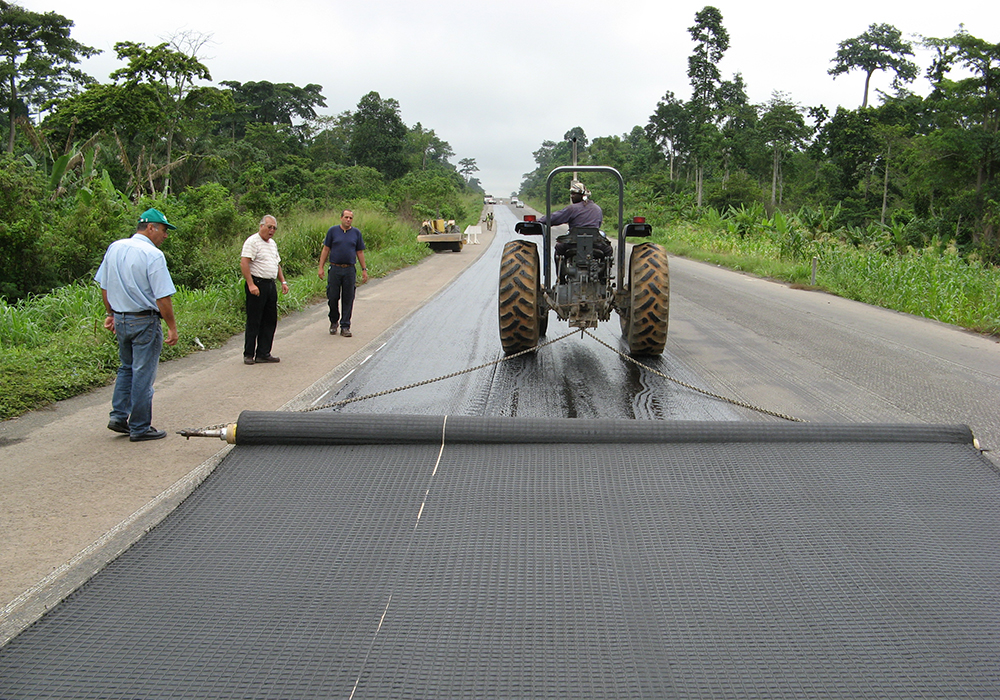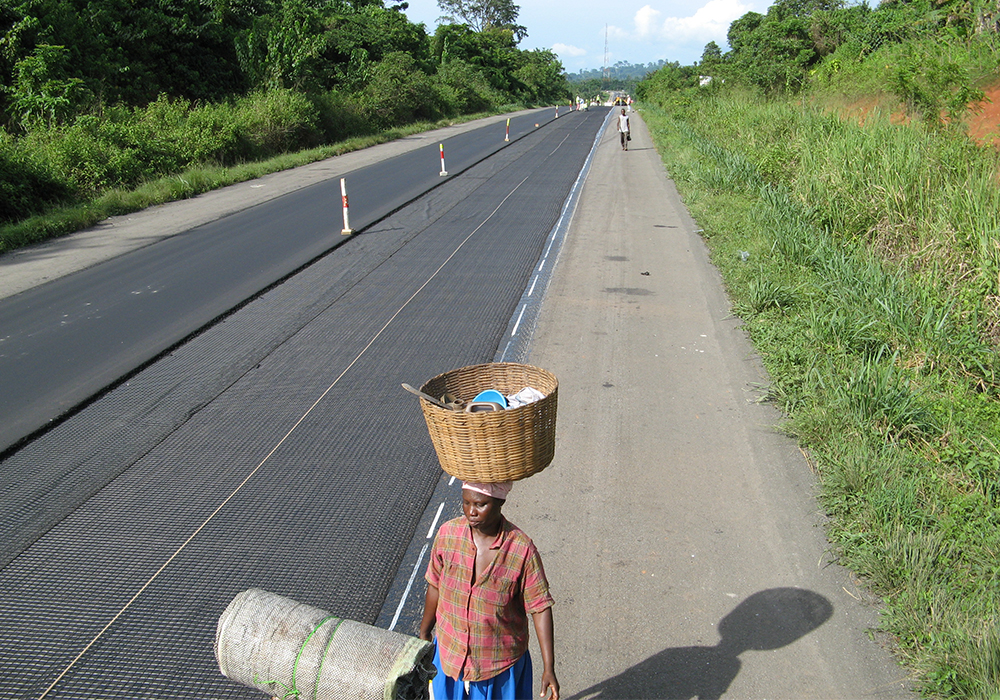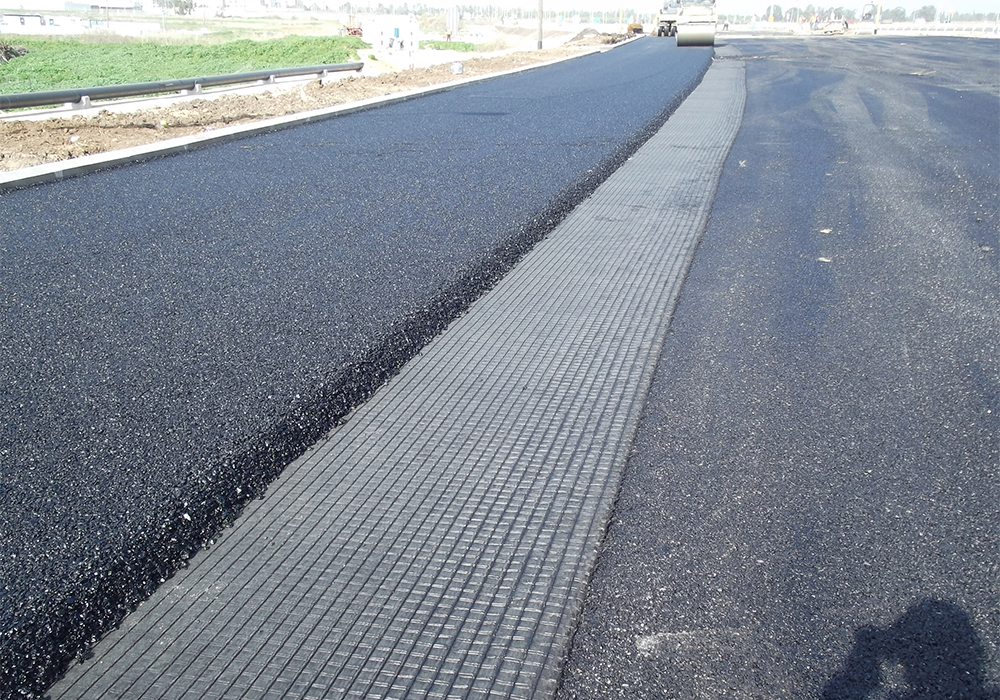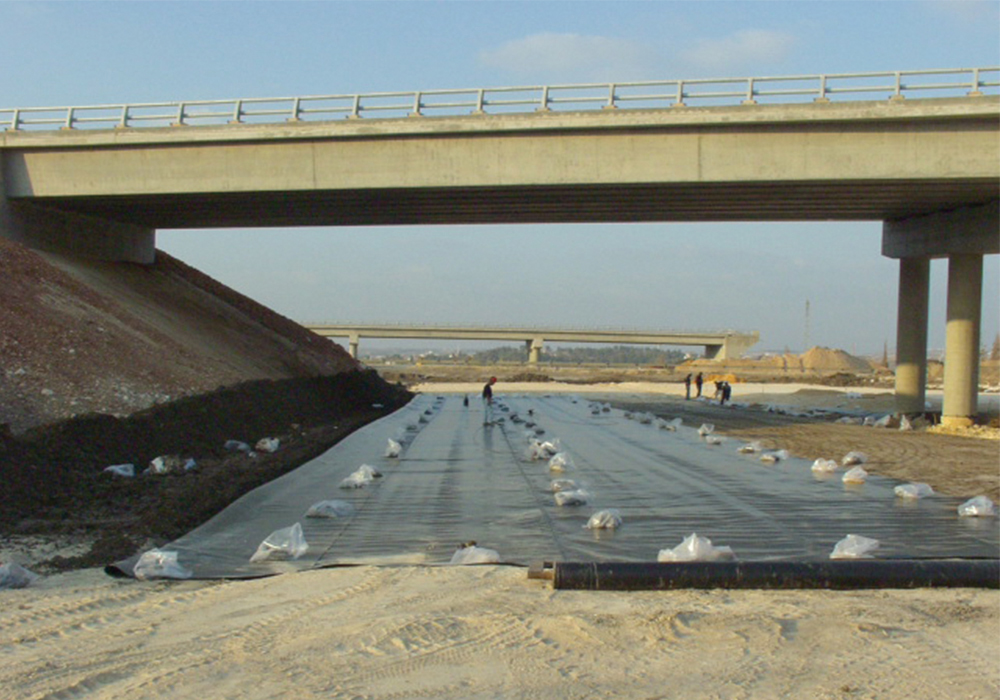Reflection and reduction cracking – Geogrid for Asphalt reinforcement
Asphalt concrete is characterized by high compression strength but low tensile resistance. The application of an interlayer between two asphalt layers can retards reflective cracking between asphalt layers by:
Increasing asphalt tensile stress resistance
Bearing a significant proportion of horizontal tension forces, thus ensuring even stress distribution over a large area
A Hatelit C Type Geogrid – advantages:
Asphalt reinforcing grids are mostly applied in asphalt pavements with a reinforcement geogrid attached to ease installation, followed by the installation of a new asphalt overlay.
Thirty years of experience have proven that the application of geogrids reduces maintenance of the asphalt pavement, extends maintenance intervals and produces favorable cost/benefit ratios.









